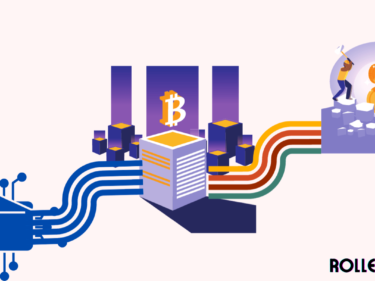what is bitcoin halving ? All you need to know about it before investment

Bitcoin Halving is an event where the number of bitcoins generated by miners for verifying transactions on the Bitcoin network is cut in half. This occurs approximately every 210,000 blocks (or every 4 years), and the resulting decrease in mining rewards helps keep a lid on inflation and maintain the scarcity of the cryptocurrency. The halving reduces the amount of new bitcoins entering circulation, and can have a significant impact on the cryptocurrency’s price and mining industry.
Bitcoin Halving Dates
The dates of the previous and future Bitcoin Halvings are:
- First Halving: November 28, 2012
- Second Halving: July 9, 2016
- Third Halving: May 11, 2020
- Fourth Halving: estimated to occur around 2024.
Note: The exact date of each halving can vary slightly due to the average time it takes to mine a block on the network, which can fluctuate.
Last Bitcoin halving
The last (Third) Bitcoin Halving occurred on May 11, 2020. During the halving, the reward for mining new blocks on the Bitcoin network was reduced from 12.5 bitcoins to 6.25 bitcoins per block. This event helps control the supply of new bitcoins and maintain the cryptocurrency’s scarcity.
Upcoming bitcoin halving
The next (Fourth) Bitcoin Halving is estimated to occur around 2024. The exact date is uncertain as it depends on the average time it takes to mine a block, which can fluctuate. During the halving, the reward for mining new blocks on the Bitcoin network will be reduced by half, helping to control the supply of new bitcoins and maintain the cryptocurrency’s scarcity.
Bitcoin halving price prediction
Predicting the price of Bitcoin after a halving event is a complex and uncertain task, and many factors can influence the cryptocurrency’s price. Some analysts believe that the halving could lead to an increase in demand for Bitcoin, as it becomes more scarce and its scarcity increases its perceived value. Others believe that the halving could lead to a decrease in demand, as miners may be less incentivized to continue verifying transactions on the network.
In general, it’s important to keep in mind that cryptocurrency prices are highly volatile and can be influenced by a wide range of factors, including regulatory changes, adoption trends, investor sentiment, and macroeconomic events. Therefore, price predictions should be taken with a grain of caution.
Who decides bitcoin halving ?
Bitcoin halving is a predetermined mechanism built into the Bitcoin protocol. It is not decided by any individual or organization, but rather is a result of the rules encoded in the software that runs the Bitcoin network.
The halving mechanism is designed to control the supply of new bitcoins entering the market, reducing the mining reward by half every 210,000 blocks (approximately every 4 years). This helps to maintain the purchasing power of Bitcoin over time and preserve its scarcity, as it has a limited supply of 21 million.
The code for the halving mechanism is open-source and available for anyone to review, but it is generally accepted as a core part of the Bitcoin protocol and is not subject to change through centralized decision-making. Instead, changes to the protocol are typically proposed and implemented through a consensus-driven process involving a large number of participants in the Bitcoin community.
Bitcoin halving calculator
A Bitcoin halving calculator is a tool that allows you to estimate the date of the next halving event and calculate the expected mining reward after the halving. These calculators use data such as the current block height and average block time to estimate the time until the next halving. They can also be used to estimate the effect of the halving on mining profitability and the potential impact on the price of Bitcoin. Keep in mind that these predictions are not exact and that cryptocurrency prices are highly volatile and can be influenced by a wide range of factors.
Bitcoin halving code
The code for the Bitcoin halving is integrated into the Bitcoin protocol and can be found in the Bitcoin Core reference client. The halving is triggered by the block height, which is defined as the number of blocks mined since the creation of the Bitcoin network. When the block height reaches a certain threshold, the mining reward is automatically reduced according to the formula specified in the code.
Here is an example of the relevant code in the Bitcoin Core client (in C++):
if (pindexLast->nHeight+1 <= 64)
nSubsidy = 50 * COIN;
else
{
int64_t nTargetTimespan = 14 * 24 * 60 * 60; // two weeks
int64_t nTargetSpacing = 10 * 60;
int64_t nInterval = nTargetTimespan / nTargetSpacing;
int64_t nSubsidy = 50 * COIN;
while (nSubsidy > 1 * COIN && pindexLast->nHeight+1 > nInterval)
{
nSubsidy >>= 1;
nInterval *= 2;
}
}
This code reduces the mining reward by half every 210,000 blocks (or approximately every 4 years), helping to control the supply of new bitcoins entering the market and maintain the cryptocurrency’s scarcity.
Why does halving increase price?
The halving can potentially lead to an increase in the price of Bitcoin due to supply and demand dynamics. As the reward for mining new blocks is reduced, the rate at which new bitcoins are added to the market decreases, reducing the overall supply. If demand for Bitcoin remains the same or increases, this can lead to an increase in its price as the reduced supply puts upward pressure on the price.
Additionally, the halving can also impact the incentives for miners to continue participating in the network, as the reduced rewards may make it less profitable for some miners to continue operating. This can lead to a reduction in the overall mining power on the network, which can in turn make it more difficult and expensive to perform malicious attacks on the network, increasing confidence in the security and stability of the system.
It is important to note that while the halving can potentially lead to an increase in the price of Bitcoin, it is not a guaranteed outcome and there are many other factors that can impact the price of the cryptocurrency. The price of Bitcoin is highly volatile and can be influenced by a wide range of factors, including global economic conditions, regulations, and investor sentiment.
What happens when all BTC is mined?
When all 21 million bitcoins have been mined, the supply of new bitcoins will be exhausted. This does not mean that transactions on the Bitcoin network will stop, but rather that the reward for mining new blocks will no longer exist. Miners will still have incentives to continue participating in the network to verify transactions and secure the network, but they will no longer receive new bitcoins as a reward.
Instead, the transaction fees paid by users to include their transactions in a block will become the primary source of revenue for miners. These fees incentivize miners to prioritize and include the most valuable transactions in the blocks they mine, balancing the supply and demand for block space on the network.
It is also possible that changes to the Bitcoin protocol could be implemented in the future to address any potential issues related to the end of the mining reward, but these changes would likely require a consensus-driven process involving a large number of participants in the Bitcoin community.
In summary, when all 21 million bitcoins have been mined, the mining reward will no longer exist, but the Bitcoin network will continue to operate and secure transactions through the transaction fees paid by users.
What year will BTC stop mining?
It is estimated that all 21 million bitcoins will be mined around the year 2140. However, it is important to note that this is just an estimate and the exact date is uncertain as it depends on a variety of factors, including the rate at which new bitcoins are mined, the overall network hashrate, and any potential changes to the Bitcoin protocol.
It is also possible that technological advancements could change the mining process, making it more efficient and allowing more bitcoins to be mined in a shorter period of time. Alternatively, changes to the protocol could be implemented to address any potential issues related to the end of the mining reward, but these changes would likely require a consensus-driven process involving a large number of participants in the Bitcoin community.
In any case, the exact date when all 21 million bitcoins will be mined is subject to change and is uncertain, but it is estimated to occur around 2140.



